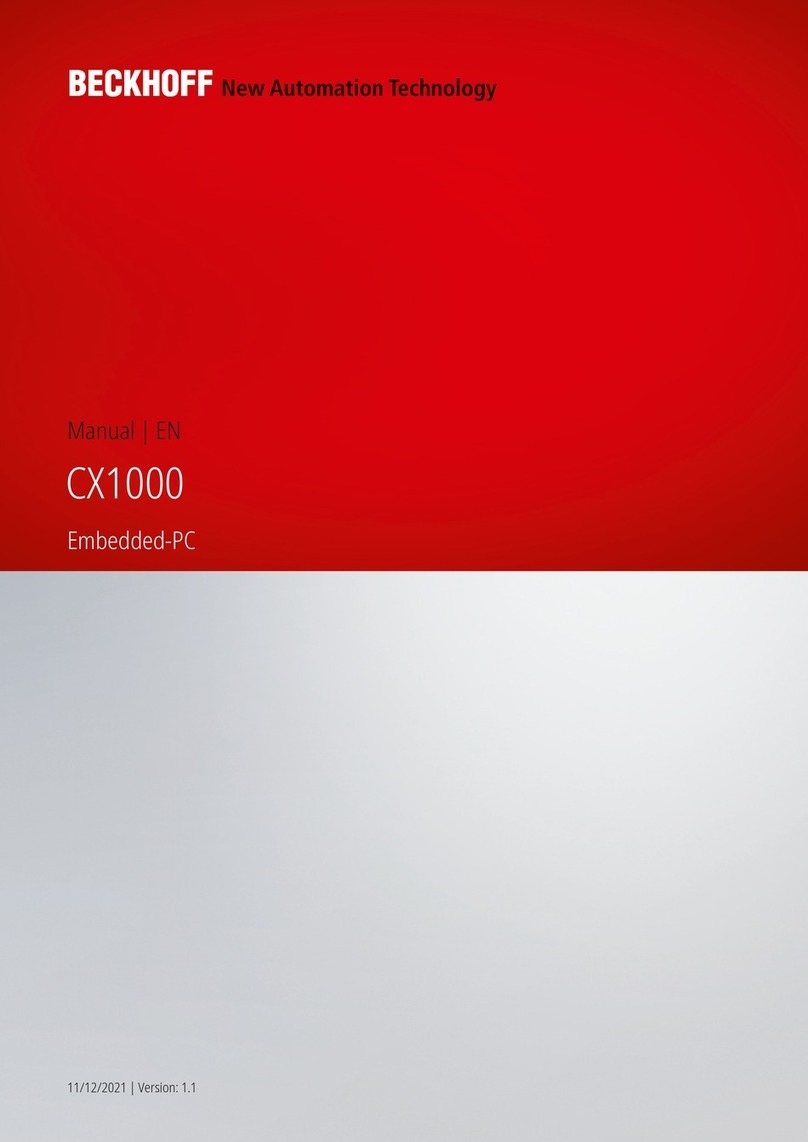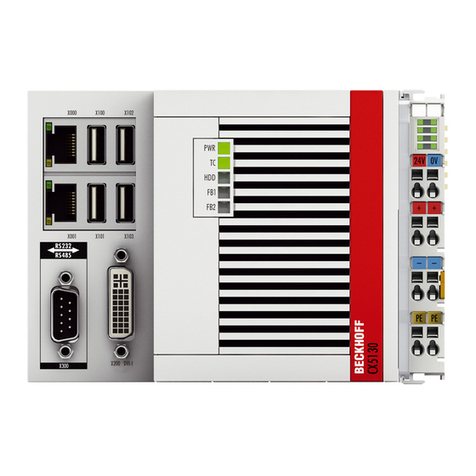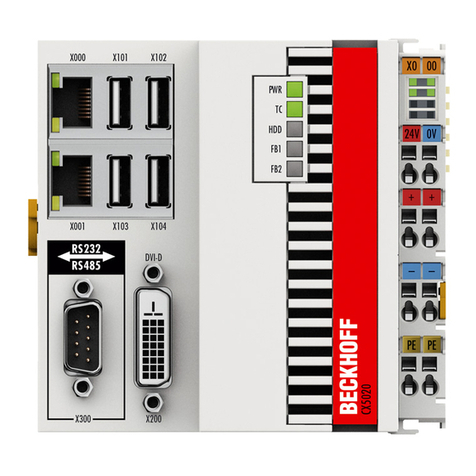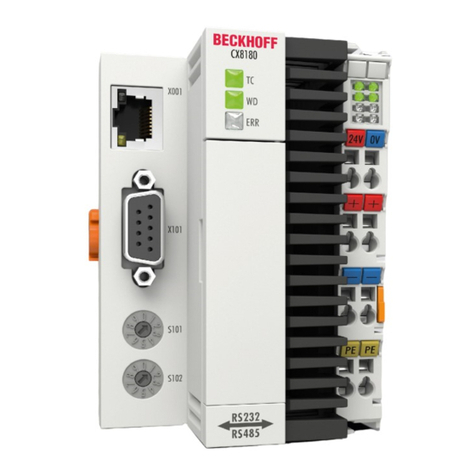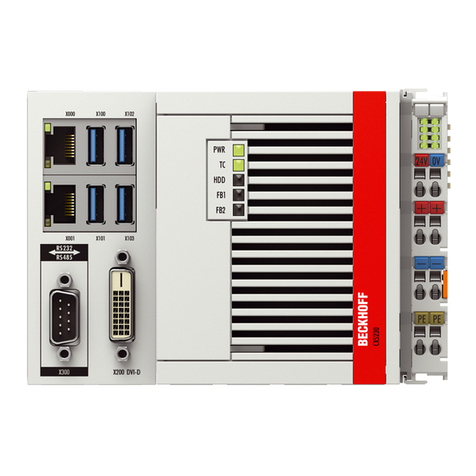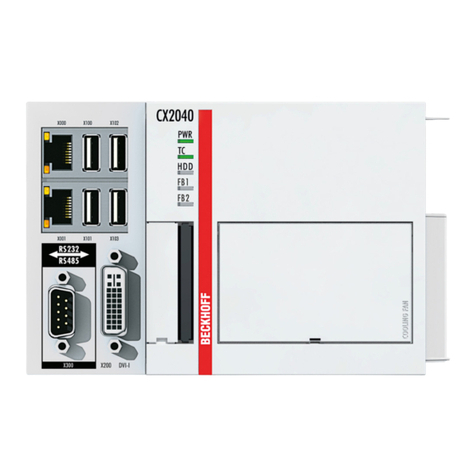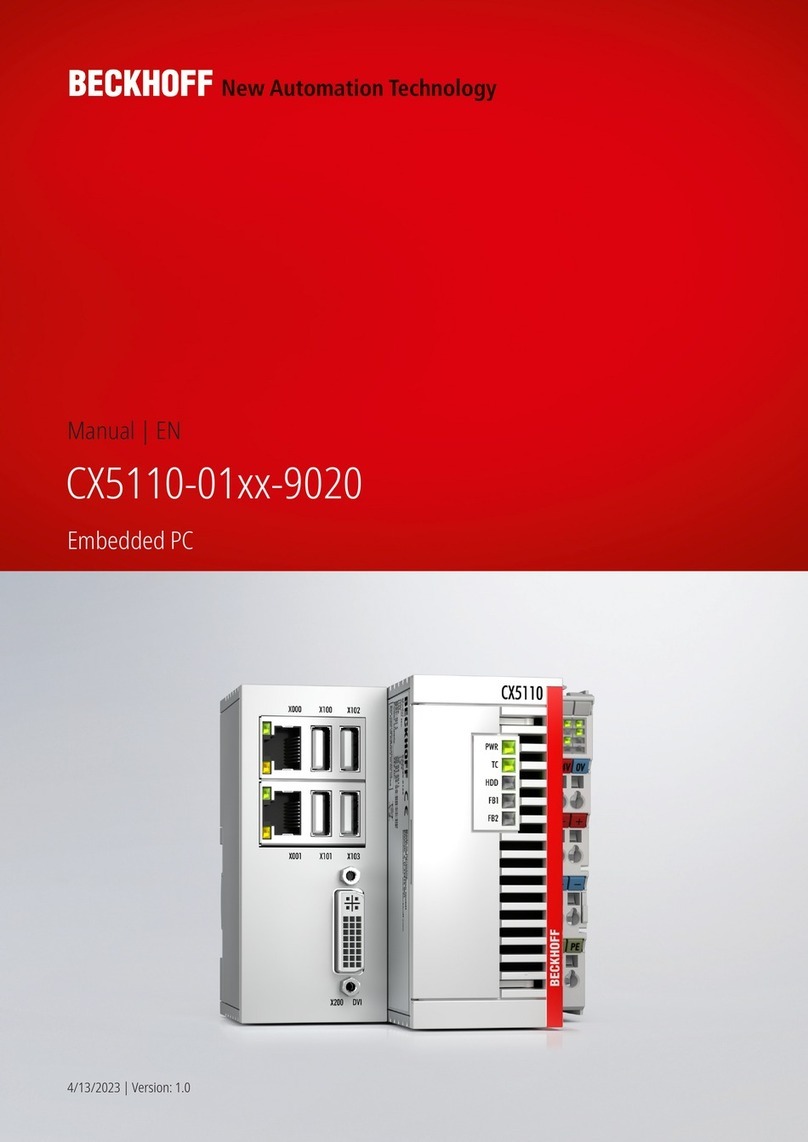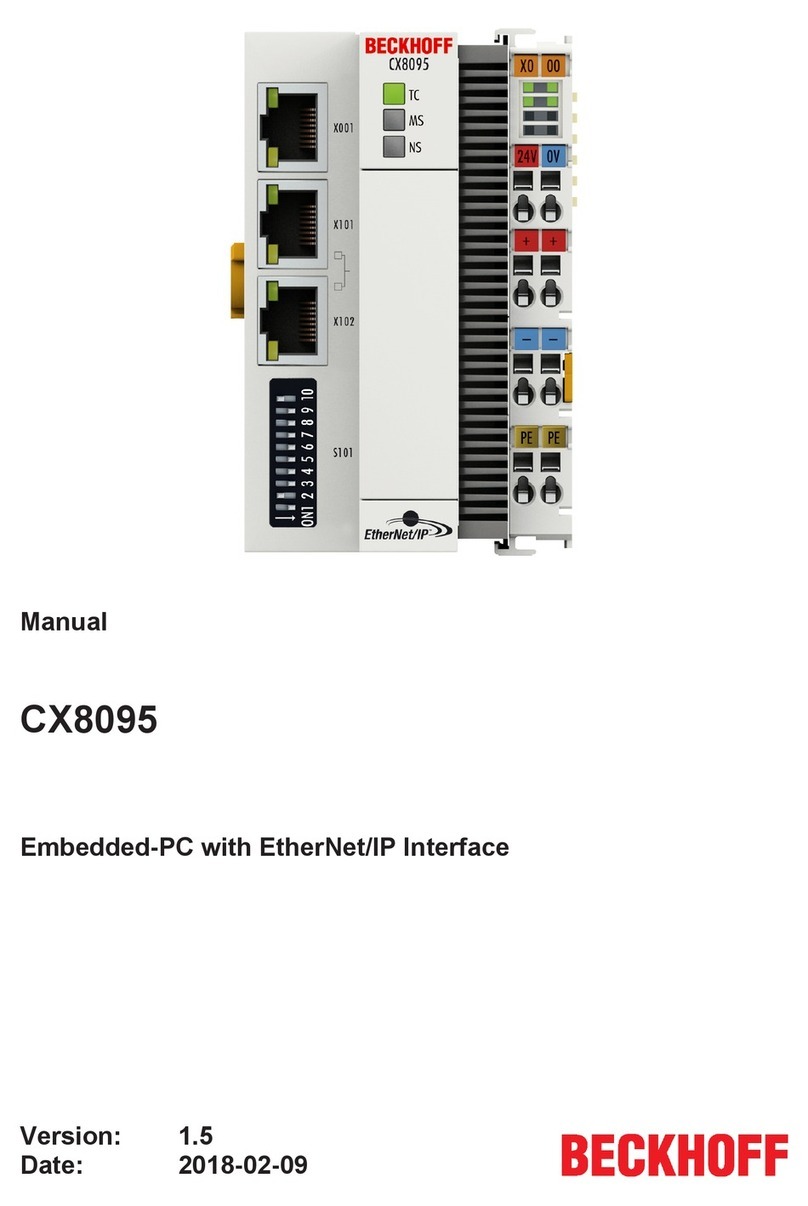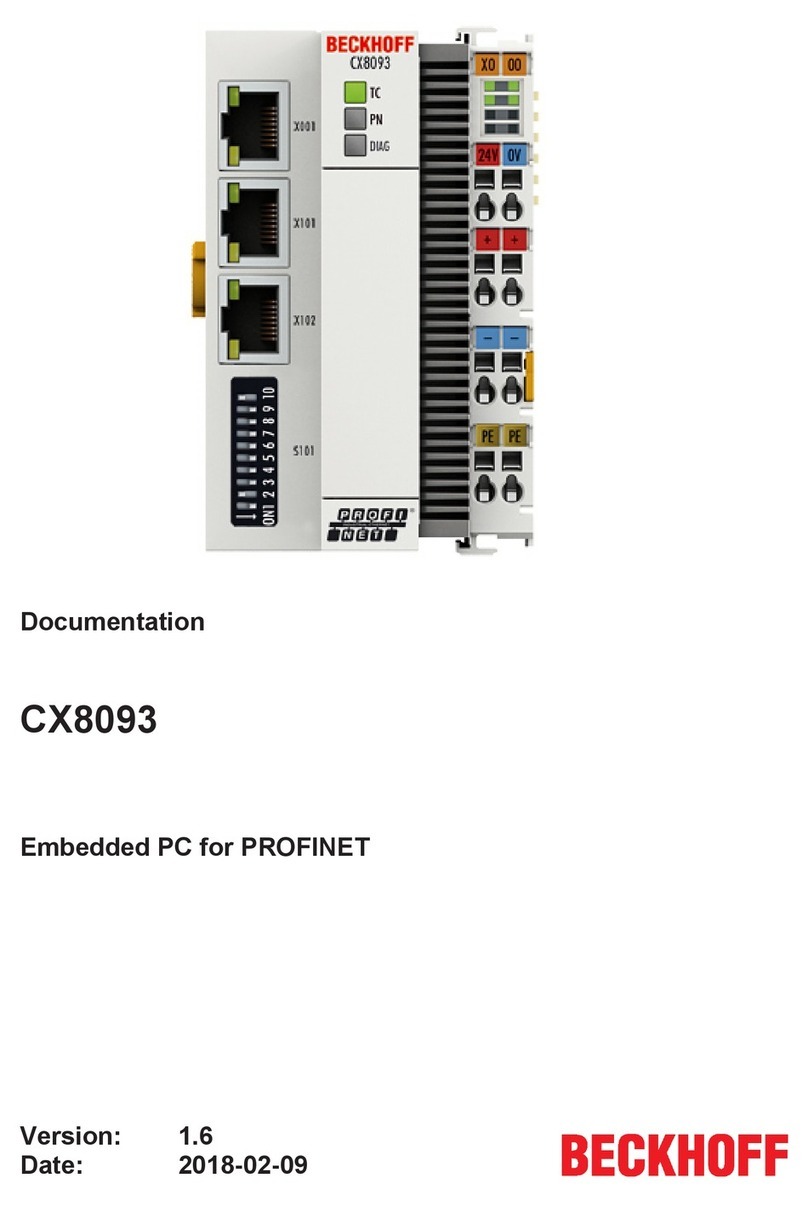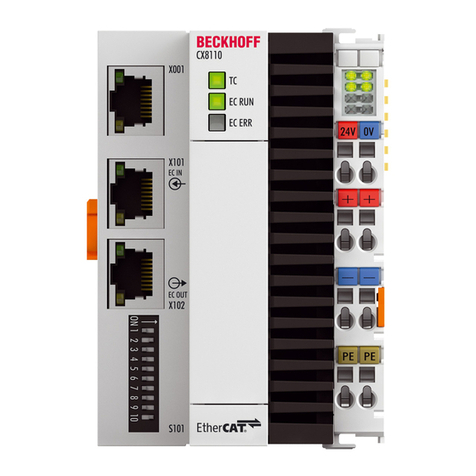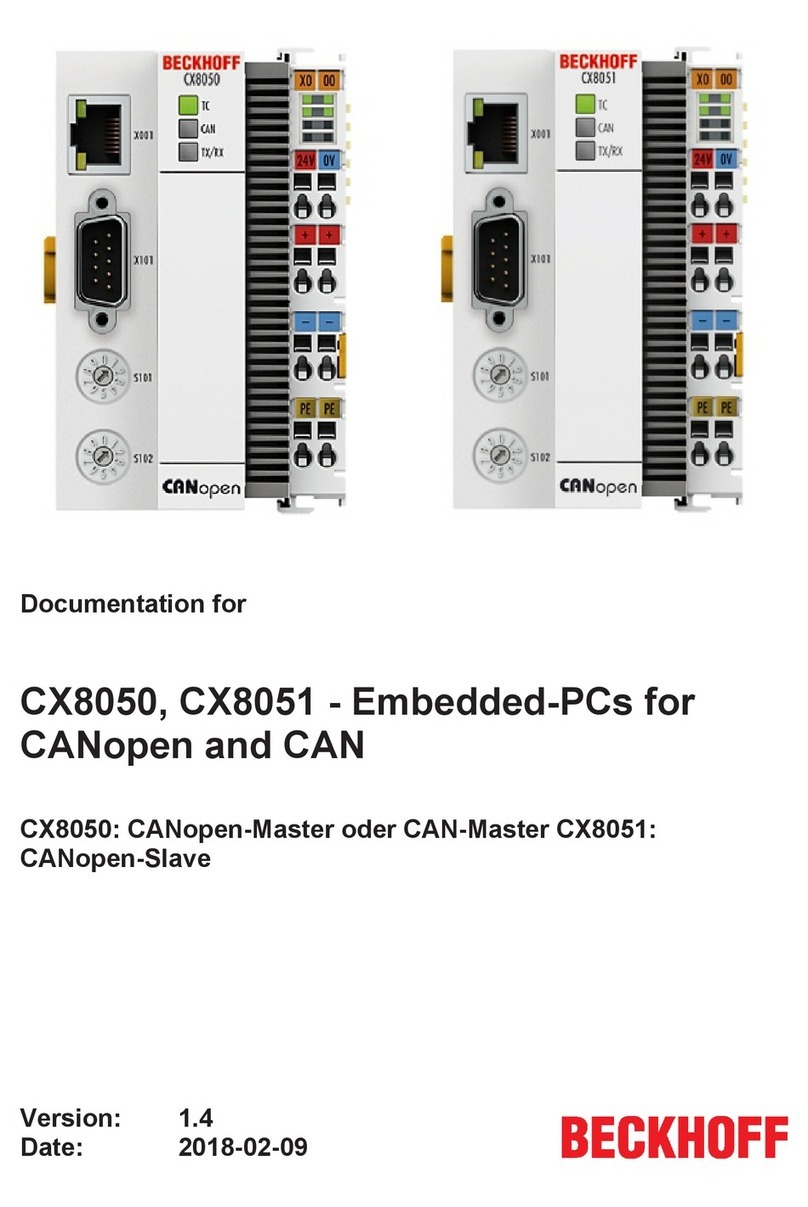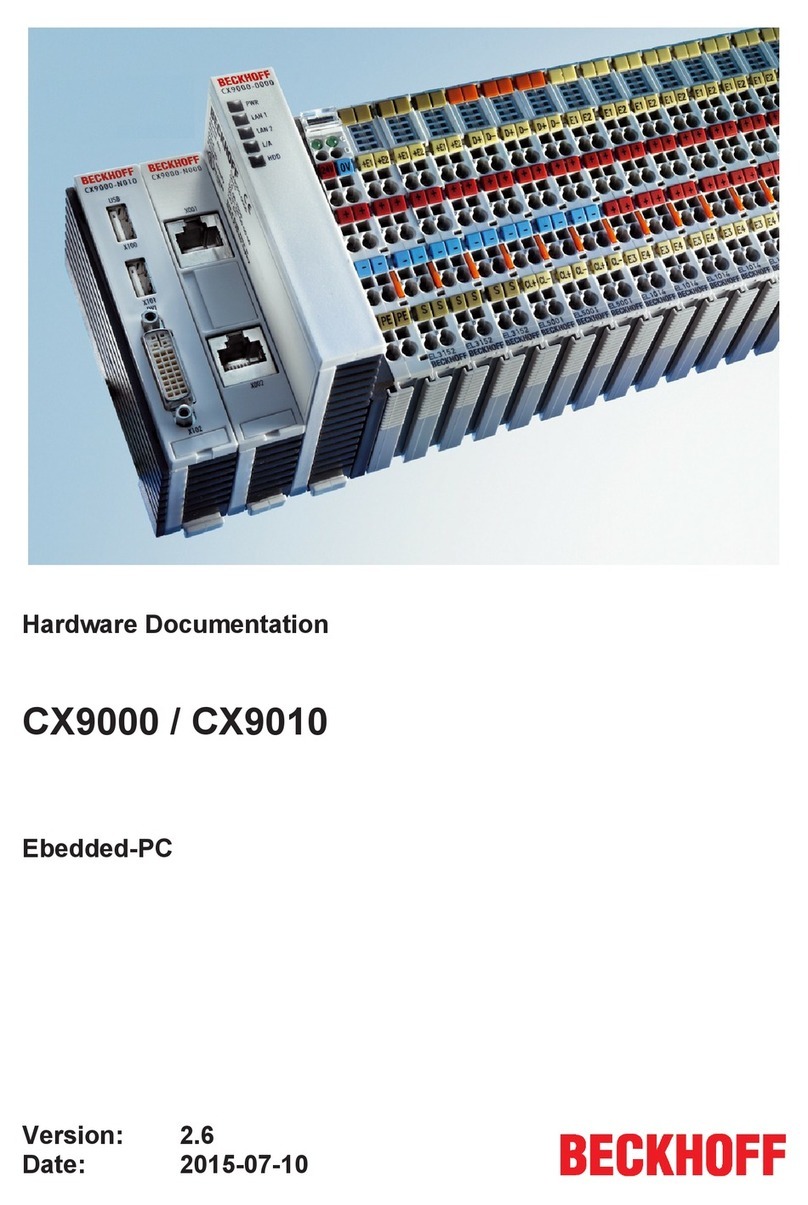
Table of contents
CX51x0 3Version: 2.8
Table of contents
1 Notes on the documentation ....................................................................................................................7
1.1 Representation and structure of warnings.........................................................................................8
1.2 Documentation issue status ..............................................................................................................9
2 For your safety.........................................................................................................................................10
2.1 Intended use....................................................................................................................................10
2.2 Staff qualification .............................................................................................................................11
2.3 Safety instructions ...........................................................................................................................11
2.4 Notes on information security ..........................................................................................................12
3 Transport and storage.............................................................................................................................13
4 Product overview.....................................................................................................................................14
4.1 Configuration of the CX51x0 Embedded PC ...................................................................................15
4.2 Name plate ......................................................................................................................................16
4.3 Types...............................................................................................................................................16
4.4 Architecture overview ......................................................................................................................19
5 Interface description ...............................................................................................................................21
5.1 USB (X100, X101, X102, X103) ......................................................................................................21
5.2 Ethernet RJ45 (X000, X001) ...........................................................................................................22
5.3 DVI-I (X200).....................................................................................................................................23
5.4 Optional interfaces...........................................................................................................................24
5.4.1 DVI-D (N010) ................................................................................................................... 24
5.4.2 DisplayPort (N011) .......................................................................................................... 25
5.4.3 Audio interface (N020)..................................................................................................... 26
5.4.4 RS232 (N030).................................................................................................................. 27
5.4.5 RS422/RS485 (N031)...................................................................................................... 28
5.4.6 EtherCAT slave (B110).................................................................................................... 29
5.4.7 PROFIBUS (x310) ........................................................................................................... 30
5.4.8 CANopen (x510) .............................................................................................................. 31
5.4.9 PROFINET RT (x930)...................................................................................................... 32
6 Commissioning........................................................................................................................................33
6.1 Assembly .........................................................................................................................................33
6.1.1 Note the permissible installation positions ...................................................................... 33
6.1.2 Attaching on mounting rail ............................................................................................... 35
6.1.3 MicroSD card installation and removal ............................................................................ 36
6.1.4 CFast card installation and removal ................................................................................ 37
6.1.5 Installing passive EtherCAT Terminals............................................................................ 38
6.2 Connecting the power supply ..........................................................................................................39
6.3 Switching on ....................................................................................................................................41
6.4 Switching off ....................................................................................................................................41
7 Configuration ...........................................................................................................................................42
7.1 Windows Embedded Compact 7 .....................................................................................................42
7.1.1 Setting up the audio interface (N020) .............................................................................. 42
7.2 Windows Embedded Standard 7 P..................................................................................................43
7.2.1 Identification of the Ethernet interfaces (X000, X001) ..................................................... 43
